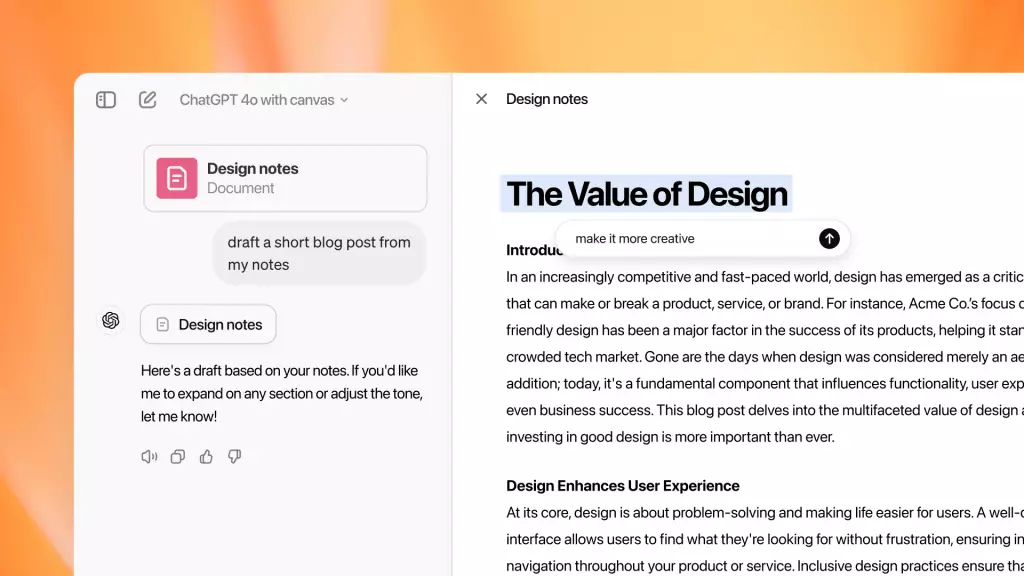In an exciting development for users of ChatGPT, OpenAI has announced that its innovative digital editing tool, Canvas, is now available to all users. This revelation was made during a recent livestream as part of their festive “12 Days of OpenAI” announcements. Previously, Canvas was a feature exclusive to paying subscribers of ChatGPT Plus, Teams, Edu, and Enterprise plans. This strategic move marks a significant expansion in accessibility, illustrating OpenAI’s commitment to enhancing the user experience across its platform.
At its core, Canvas reimagines the ChatGPT interface by transforming the traditional setup into a more efficient workflow. This alteration provides a left-hand sidebar for user instructions and a main screen for ongoing projects. Unlike the previous model, where users had to request sequential text responses, Canvas allows for real-time editing. When modifications are requested, users can see those changes implemented immediately within the right-hand sidebar, eliminating the cumbersome back-and-forth often required in standard text-based interactions.
One of the groundbreaking features introduced with this new rollout is Canvas’s ability to execute Python code directly. This addition significantly streamlines the process for developers by allowing them to visualize and test their code within the same interface. This direct execution capability addresses a major pain point for users, enabling them to avoid the tedious copying and pasting of code into separate environments. The capacity to preview results immediately after editing offers a more cohesive and productive experience, akin to systems offered by competitors such as Anthropic’s Claude Artifacts.
Another remarkable feature of Canvas is its graphic generation capability. Users can now create and visualize charts directly from their code, allowing for iterative refinement without the need for external software. This functionality not only saves time but also encourages creativity and experimentation among developers and analysts. Additionally, the Canvas tool comes equipped with a bug detection feature, enhancing debugging efficiency by suggesting potential fixes. This proactive approach to error identification is a valuable asset, particularly for those venturing into complex coding territories.
Moreover, users crafting custom GPTs will find Canvas integrated by default, though they retain control over its activation for specific prompts. This thoughtful approach ensures that existing custom solutions remain unaffected while introducing the advanced capabilities of Canvas. Users can fine-tune parameters to strike the right balance according to their needs, catering to both new and seasoned developers who appreciate customization in their workflows.
With this expansion, OpenAI is not only enhancing the functionality of ChatGPT but also amplifying its potential as a versatile tool for a diverse range of users. Canvas represents a pivotal evolution in how users interact with AI, making it a more intuitive and powerful resource for communication, coding, and creative tasks alike. As OpenAI continues to innovate, the future looks brighter for those seeking advanced capabilities in their digital interactions.


Leave a Reply
You must be logged in to post a comment.